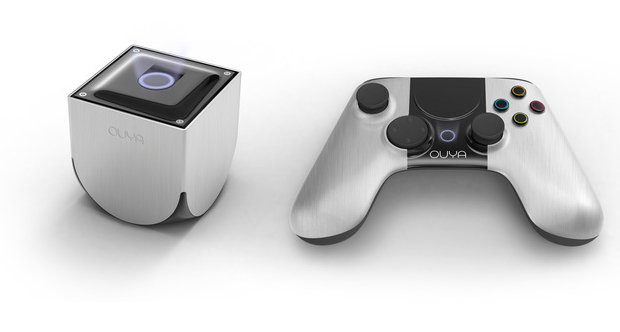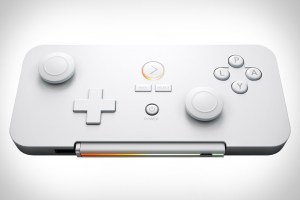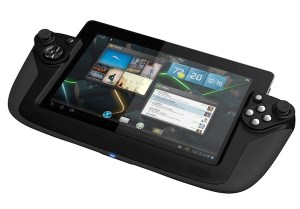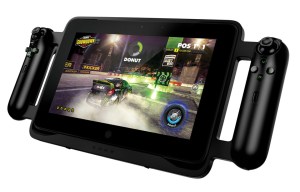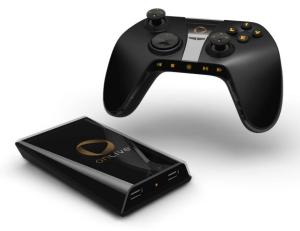Normally, we video game guys don’t have to work too hard when it comes to covering consumer electronics. We have a few consoles, a few handhelds, maybe a few peripherals here and again, but it’s nothing like the crazy world of phones and tablets … or at least it wasn’t.
This year, something happened: We started getting video game consoles from companies other than Nintendo, Sony, and Microsoft.
These alternative gaming devices, sometimes called microconsoles, come in all shapes, sizes, and flavors. You want to stream your games like Netflix? You can do that. Want to play Android-based games on a tablet with controls built into a handle? That’s a thing. Want Valve’s Steam experience on your television? It’s happening.
But it’s damn hard to keep up with everything. How do they work? What kind of games will they run? How much do they cost? OK — I’m panicking now just thinking about putting all of this information together for you … but I did.
We’ll try to keep this easy. Let’s get started.
Android-based microconsoles
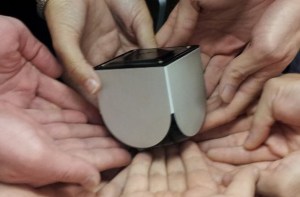
Ouya
Price: $99
Release date: June 25, 2013
Website: Ouya.tv
Ouya is the single biggest reason I’m explaining all of this. When the tiny console box launched on Kickstarter — and raked in over $8 million from backers — it created more questions about the future of gaming than it answered.
The basic concept of Ouya is that it will bring the open platform of Android to the television. It accomplishes this by providing a cheap box that has the guts of a smartphone but doesn’t rely on touch-screen controls. Instead, it comes with a physical controller with buttons, analog sticks, and everything else that gamers require to run persistently in an ever-scrolling world.
The console plays Android games, most of which aren’t designed for a controller, so Ouya is also a digital-distribution platform that will showcase original games optimized for the platform (and Android games developers redesigned with physical controls).
On top of that, Ouya’s creators also promise the device is completely open to hacking. That means emulators and piracy. A good chunk of consumers may get something like Ouya just to play classic Super Nintendo games on one of the many Android emulator apps. A bunch more might get the system and pirate Android games (not that the developers can’t fight back on Ouya).
For Ouya to succeed, it will have to build a library of games that convince a portion of the audience to get their software directly through the new microconsole. This is possible.
As of late May, the microconsole currently has over 125 games.
Ouya is about to ship out to consumers in just a few months. It could easily launch with games like Minecraft Pocket Edition and others that already have full controller support.
The little Android has a few months to prove it’s worth the HDMI input it’s taking up on your television, otherwise people are likely to forget it as the new consoles come pouring down and wash it away.
Price: $79
Release date: June 25, 2013
Website: Gamestick.tv
Take everything I wrote about Ouya and apply it to GameStick. It’s nearly all the same, but the GameStick is smaller than Ouya and $20 cheaper.
This thumb-drive-sized HDMI device uses Android. It has smartphone-like components. It comes with a physical controller. It has its own digital distribution platform.
The main difference between Ouya and GameStick is that PlayJam, the company behind this tiny device, is a game developer first. That could mean the GameStick will have better software support. It’s also possible that it is less powerful than Ouya, but both can probably handle similar software.
GameStick’s Kickstarter raised $647,658 from 5,691 backers.
Android-based tablet-controller hybrids
Price: $350
Release date: June 2013
Website: Shield.nvidia.com
Now things start getting weird. We went full hands-on with Nvidia’s Shield Android handheld at the Consumer Electronics Show. It’s an impressive gaming device with some seriously cool features.
Nvidia’s handheld looks like an Xbox controller with a TV jammed into it. It features the company’s next-gen Tegra 4 processor and a 5-inch touch screen that flips up during gameplay.
It’s another controller-focused take on Android gaming. It has an HDMI port, so gamers can plug it into their televisions and use it just like Ouya. Developers are gonna have a lot of options if they want to make a mobile game that supports physical buttons.
But Project Shield has something Ouya and GameStick do not: The ability to stream games from your PC directly to the portable unit. This doesn’t mean you’ll be playing The Elder Scrolls V: Skyrim on the bus, but your PC could feed games to the system if you’re sitting on your couch. In that way, the device is a lot like a Wii U GamePad controller for the PC. Only instead of New Super Mario Bros. U, gamers can tap into their entire Steam libraries.
At $350, it is more than triple the price of the other two Android microconsoles, but it is also much more powerful and full of features.
Price: $249
Release date: Spring 2013
Website: wikipad.com
Wikipad is the name of the company and the product. The device is a 7-inch Android-based tablet that comes with a game-controller dock. This shell adds analog sticks, face buttons, and shoulder buttons to what is otherwise a pretty standard Android slate. Those controls, however, allow for precision gaming in titles from both the Google Play market and the PlayStation Mobile Store.
Sony provides a lot of classic PlayStation titles on its Android store, and a system with physical controls is the ideal way to experience them. Only Sony-approved devices can access its store, so hopefully GameStick, Ouya, and Project Shield can get on that list.
Wikipad originally planned to launch a 10-inch tablet in late 2012, but that never materialized. Now, it’s struggling to get its Tegra 3-powered Wikipad 7 out to consumers before the tech ages out of viability. Even if the company does get it out before the end of June, it probably won’t catch on with gamers.
“[Wikipad 7] was a great idea on paper, but someone forgot to write ‘good design’ on the [design] sheet,” GamesBeat’s Dan “Shoe” Hsu wrote in our hands-on with the ‘crappy’ product in April.
You would think that the delays would have led to a better result. This thing is gonna have a hard time as it is, but against a potentially better-designed Nvidia product running a next-gen graphics chip … well, I don’t like its chances.
Windows-based tablet-controller hybrid
Price: $999 (base)/$1299 (pro)/$1499 (pro + gamepad)
Release date: Q3 2013
Website: Razerzone.com
OK, enough Android. Perhaps you prefer your console/handheld alternatives IBM-compatible? Gaming equipment company Razer might have what you need.
It’s called Razer Edge. It’s a 10-inch Windows-based gaming tablet with screaming hardware. The $999 “basic” version starts with a Intel Core i5 1.7 GHz processor that can overclock to 2.6 GHz. It has 4 GB RAM, 64 GB SSD, and a GeForce GT 640M graphics card all packed into something not much bigger than a standard tablet. The $1299 Pro model upgrades the system to a Core i7, 8 GB RAM, and 128 or 256 GB SSD.
A rig with the Edge’s specs can run Skyrim at around medium to high settings. That’s not bad for a portable device.
Add $200 to the price and it comes with a controller dock similar to the Wikipad. Razer Edge also has a keyboard dock for traditional gaming and a living-room dock with a plethora of inputs and outputs. Just like most things on this list, the Razer Edge can connect to your TV, work with wireless controllers, and replace your console.
Valve-approved Windows/Linux-based Steam Box things
Price: $999
Release date: March 2013
Website: Xi3.com
The Steam Box is something much more nebulous than the Xi3 Piston micro PC, but it gives us a good idea of what Valve wants.
Valve is pushing the idea of a TV-connected gaming PC pretty hard. The Xi3 is a result of that. Valve put some money into Xi3 and is definitely experimenting with the company’s hardware. We’ll get into what exactly Valve is doing with the Steam Box as a whole in the very next section, but let’s explain the Piston first.
The Piston is a tiny little powerhouse. It’s a small cube-like device with a 3.2 GHz quad-core processor from AMD that packs the graphic processor on the same chip. It has 8 GB of RAM and up to 1 TB of storage capacity.
You’re supposed to plug this thing into your TV and run Steam in Big Picture mode, the interface the company designed for television displays, and that’s it. You have a Steam console.
The Steam Box
 Price: ?
Price: ?
Release date: ?
Website: ?
Valve is working on a piece of hardware all their own. It is a Linux PC that will plug into your TV, but the company is also inviting others to do the same. If those companies want Valve’s help, Valve will help.
The software giant is going for a three-tiered strategy with the so-called “Steam Box.” Valve chief executive officer Gabe Newell called it a “good, better, and best” model in his interview with The Verge.
The “good” solution involves streaming devices. Not something like OnLive or Netflix that streams the data from some centralized location out to your house, but something that streams the games from your gaming PC to your television. Nvidia revealed a graphics card called Grid that is capable of something like that at CES.
The “better” solution is the one that Valve will release. It has a dedicated CPU and GPU. It doesn’t have a physical-media player. It’s small and quiet. It runs Linux, it has its own controller, and Valve will sell it itself. It is a lot like the Xi3 Piston.
The “best” solution is the craziest, most expensive rigs you can think of. They have all the bells an whistles. They run big, hot, and loud. They aren’t even really Steam Boxes.
Games-streaming service
Price: $99.99
Release date: Available now
Website: Onlive.com
OnLive is still a thing. In August, GamesBeat reported that OnLive went through restructuring that saw its assets sold to another company. It’s still operational, and users can still play games on the service.
For those that don’t remember, OnLive is Netflix for video games. Gamers can stream full console games, like BioShock or Saints Row: The Third, to their PC, tablet, phone, or television without any serious hardware.
For the television, OnLive released a microconsole that can zap the digital platform right to a television. It works surprisingly well, but it the occasional lag is enough to keep it from fully replacing a dedicated gaming system.
Turns out your phone is already a console
Price: $7.65
Release date: Available now
Website: Monoprice.com
The thing about the Ouya and the GameStick is that they’re just focusing on a feature that your Android smartphone is already completely capable of. The Ouya plugs into your television and is compatible with a physical controller. You can do that with a Nexus 4, Samsung Galaxy S III, or an HTC DNA.
MHL cables allow people to connect a phone to a television HDMI input. Then some Android apps allow players to use a PlayStation 3 or Wii controller to interact with games. It’s a cheap and easy solution that basically amounts to the same thing as Ouya.
Of course, Ouya may encourage more developers to produce controller friendly games, but those titles are compatible with standard Android phones.
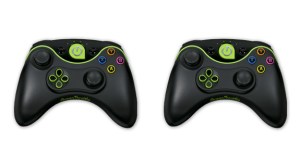 Green Throttle Atlas Controller
Green Throttle Atlas Controller
Price: $44.95
Release date: Early spring 2013
Website: Store.GreenThrottle.com
Green Throttle takes the idea of MHL cables a step further. The company designed its Atlas controller to work with Android phones. It sells the controllers in bundles with the cables required to connect your smartphone to the television.
Green Throttle wants players to use their phones as a console and they want them to use the Atlas to interact with it. The company has its own proprietary digital-download store similar to Ouya and GameStick. With this device, your phone truly is almost no different from either of those dedicated consoles, and it is probably more powerful than at least the GameStick.
VentureBeat's mission is to be a digital town square for technical decision-makers to gain knowledge about transformative enterprise technology and transact. Learn More
